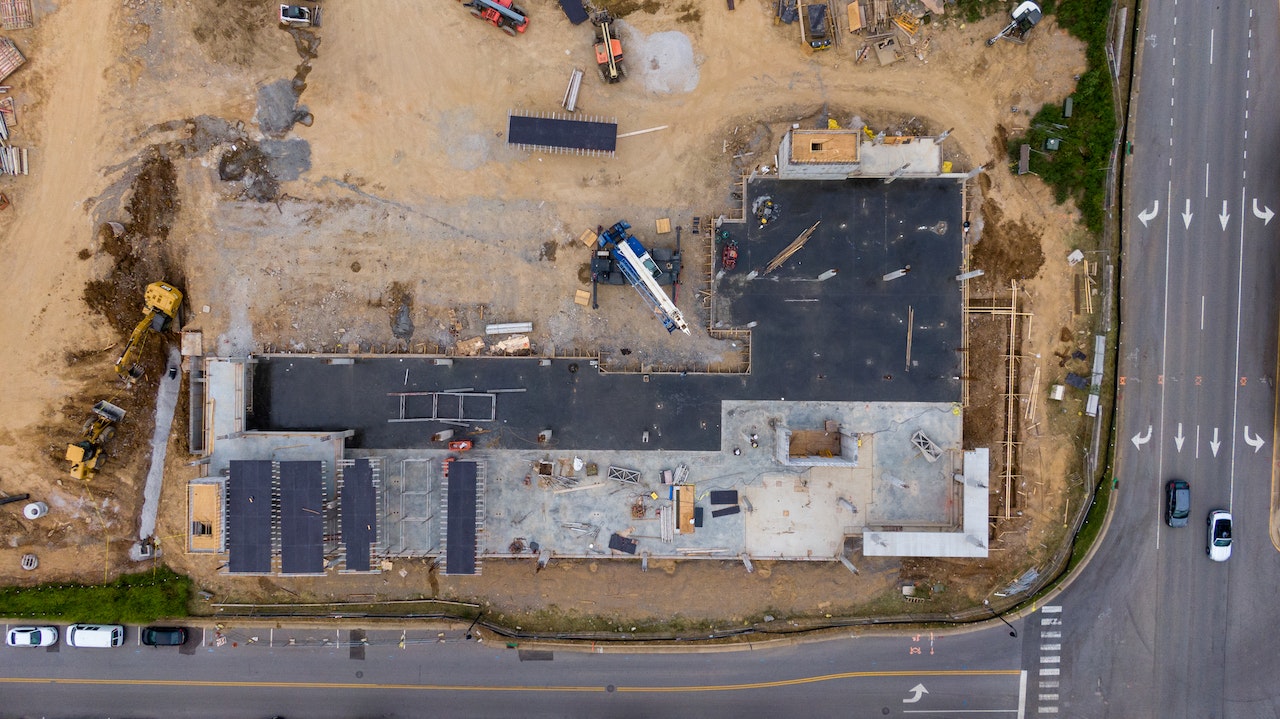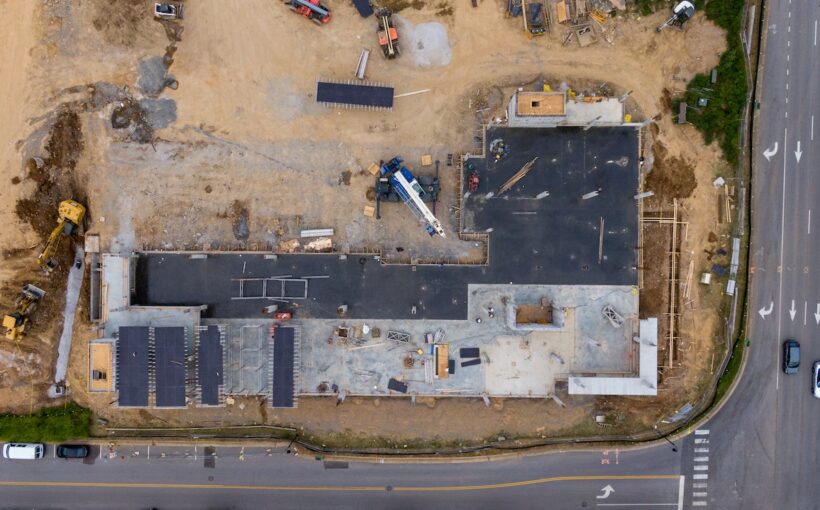
As the bustling economic and cultural hub of Nigeria, Lagos State experiences rapid urbanisation and population growth. With the increasing demand for housing and commercial spaces, it has become crucial for the government to ensure proper urban planning and safety regulations. Hence, obtaining building approval is a critical step for any construction project.
Understanding Building Approval
Building approval, commonly referred to as planning permission or building permit, is an official authorisation provided by the government to initiate construction or renovation activities on a property. This crucial consent ensures that the proposed project adheres to local building codes, safety regulations, and zoning laws, thereby fostering sustainable development and safeguarding the welfare of the public.
The process of obtaining building approval in Lagos state is overseen by multiple government agencies. These agencies are responsible for evaluating construction proposals and ensuring that all projects meet the required standards. By carefully scrutinising the plans and specifications, they aim to create a harmonious urban landscape while mitigating potential risks to public safety and the environment.
Securing building approval involves a thorough assessment of various factors, such as the project’s design, structural integrity, environmental impact, and adherence to the city’s master plan. This meticulous review process is essential to maintain the city’s aesthetics, enhance resilience against natural disasters, and promote efficient land use.
Moreover, the Lagos State Government plays a pivotal role in fostering sustainable urban development by encouraging the use of eco-friendly materials, energy-efficient technologies, and innovative construction practices. By implementing these measures, they strive to achieve a greener and more resilient urban environment that benefits both present and future generations.
The time it takes to obtain building approval in Lagos can vary depending on several factors, such as the complexity of the project, the completeness of the submitted documents, the efficiency of the government agencies involved, and the workload they are currently handling. In some cases, simple and straightforward projects that comply with all relevant regulations may receive approval within a few weeks or months. However, for more complex or large-scale developments, the process could take several months to a year or even longer.
To expedite the approval process, it’s essential for applicants to ensure that they provide all the required documentation accurately and meet all the necessary building codes and regulations. Engaging with professional architects, engineers, and consultants who are familiar with the local building regulations can also help streamline the process.
It’s important to note that the timeline for obtaining building approval may change over time due to updates in government policies and procedures. Therefore, it is advisable to check with the relevant Lagos State government agencies or consult with professionals familiar with the local building approval process for the most up-to-date information.
Requirements for Building Approval
Architectural Drawings and Design
To obtain building approval, a comprehensive architectural plan is of utmost importance. This plan must encompass detailed floor plans, elevations, cross-sections, and site plans, which together showcase the proposed construction’s dimensions, materials, and structural integrity. This level of detail ensures that all aspects of the building project are carefully considered, and it provides a clear and comprehensive overview for the approval authorities to assess the feasibility, safety, and adherence to regulations of the proposed construction. In essence, a meticulously prepared architectural plan serves as the blueprint for turning a vision into a tangible and successful construction project.
Environmental Impact Assessment (EIA)
Projects with potential impacts on the environment are subject to an Environmental Impact Assessment (EIA). This crucial evaluation process thoroughly assesses the probable environmental, social, and economic consequences of the proposed construction or development. By conducting the EIA, experts can identify potential risks and suggest appropriate mitigation measures to minimise adverse effects on the surrounding environment and communities. This comprehensive approach ensures responsible and sustainable decision-making, promoting a balance between development and ecological preservation for the benefit of current and future generations.
The Environmental Impact Assessment (EIA) process is a systematic and comprehensive evaluation conducted before implementing projects that might have significant impacts on the environment. The primary goal of EIA is to ensure sustainable development by identifying potential environmental, social, and economic consequences of a proposed project and proposing mitigation measures to minimise negative impacts. Here’s an overview of the typical steps involved in the EIA process:
Screening
The process begins with screening to determine whether a project requires an EIA. Projects are assessed based on their size, nature, location, and potential impacts. Projects that are likely to have significant environmental effects proceed to the next stage.
Scoping
During scoping, the key environmental issues and concerns related to the project are identified. Stakeholders, including local communities, authorities, and experts, are consulted to ensure all relevant aspects are considered in the assessment.
Baseline Data Collection
Comprehensive data on the existing environmental conditions in the project area is gathered. This includes information on air and water quality, biodiversity, social and cultural aspects, and economic activities. Baseline data provides a basis for comparing the pre-project conditions with the anticipated post-project conditions.
Impact Assessment
This is the core of the EIA process, where the potential impacts of the project on the environment, society, and economy are analysed. Both direct and indirect impacts are considered. Various environmental factors such as air and water pollution, habitat destruction, noise, and traffic are evaluated, along with social aspects like displacement of communities and cultural heritage.
Mitigation Measures
Based on the identified impacts, appropriate mitigation measures are proposed. These measures aim to reduce, eliminate, or compensate for adverse effects on the environment and communities. Mitigation plans are designed to ensure responsible and sustainable project implementation.
Environmental Management Plan (EMP)
An Environmental Management Plan is developed, outlining the procedures and guidelines for monitoring and managing the environmental impacts throughout the project’s life cycle. It ensures that the proposed mitigation measures are effectively implemented.
Public Consultation
Public participation is a crucial aspect of the EIA process. Consultations with local communities and stakeholders are held to gather feedback and address concerns related to the project’s impacts and proposed mitigation measures. The findings of the EIA, including the impacts and mitigation measures, are presented to the relevant authorities and decision-makers. They review the assessment report and consider the environmental aspects when making decisions on project approval or permitting.
Once the project is approved, monitoring of its environmental performance is carried out to ensure compliance with the mitigation measures outlined in the EMP. Regular monitoring helps identify any unforeseen impacts and enables timely corrective actions. The EIA process may vary slightly from one country to another, depending on local regulations and requirements. Nonetheless, the core principles of assessment, mitigation, and public participation remain consistent in ensuring environmentally responsible development.
Title and Ownership Documents
Applicants must provide proof of ownership or legal right to the property where the construction is planned. This can be a land title, Certificate of Occupancy (C of O), or other relevant documents. A certified structural engineer should prepare a report ensuring the stability and safety of the proposed structure.
Depending on the project’s scope, additional clearances might be necessary from agencies such as the Lagos State Building Control Agency (LASBCA), Lagos State Physical Planning Permit Authority (LASPPPA), and the Lagos State Environmental Protection Agency (LASEPA). The proposed construction must comply with the zoning regulations of the area where it will be located. Different zones have specific land use regulations, such as residential, commercial, industrial, or mixed-use.
Payment of Fees and Approval
Applicants are required to pay various processing fees, which may vary based on the size and type of the project. They will submit all required documents to the relevant government agency, usually the LASBCA or LASPPPA, depending on the scope of the project. The agency then reviews the submitted documents to ensure compliance with regulations and safety standards. Inspectors from the relevant agencies will visit the proposed construction site to verify the accuracy of the submitted documents and assess their suitability.
Based on the evaluation and inspection, the agency either grants building approval or provides reasons for rejection, if applicable.
***
The post Dennis Isong: How to Secure Building Approval for Site Development in Lagos appeared first on BellaNaija – Showcasing Africa to the world. Read today!.



